Between 1908 and her death, in 1946, Gertrude Stein created over a hundred prose portraits, which she called “word paintings.” Most of her portraits were of her friends: Alice B. Toklas, Matisse, Picasso, Sherwood Anderson, Erik Satie, Hemingway, Man Ray, Jean Cocteau, Jane Heap, Carl Van Vechten, Virgil Thomson, Alfred Stieglitz, Francis Picabia, Guillaume Apollinaire, and others.
In some cases, she was returning the favor of a friend having made a portrait of her in another medium. Picasso’s Portrait of Gertrude Stein was followed by Stein’s “Pablo Picasso,” which appeared in a special issue of Camera Work, edited by Alfred Stieglitz. (The issue also featured Stein’s “Henri Matisse” and reproductions of works by Picasso and Matisse.) Stein would then write a prose portrait of Stieglitz, too.
There’s something precious and annoying about these artists’ mutual admiration, but also something admirably transactional—you do me, and I’ll do you, and we’ll both benefit. This mutual portrait project reached a new level of absurdity in 1923, when Stein’s “A Portrait of Jo Davidson” was published in Vanity Fair. Stein’s piece was accompanied by three photos: a photo, by Man Ray, of Davidson working on his recently completed sculpture of Stein (a bronze casting based on Davidson’s model now sits in Bryant Park); a photo of Jacques Lipchitz’s 1920 bronze bust of Stein; and a photo of Picasso’s 1907 painting.
The caption to Ray’s photo of Davidson reported that Stein had “returned [Davidson’s] compliment” by writing a portrait of him. Here is that portrait: “You know and I know, I know and you know, you know and I know, we know and they know, they know and we know, they know and I know, they know and they know you know and you know I know and I know.”
If there was something to be known, not even Davidson knew what it was. He wrote, in a 1951 memoir, “Gertrude did a portrait of me in prose. When she read it aloud, I thought it was wonderful. It was published in Vanity Fair with my portrait of her. But when I tried to read it out loud to some friends, or for that matter to myself, it didn’t make very much sense.”
Man Ray was also part of this mutual portrait society. In 1922, Ray took Gertrude Stein and Picasso’s Portrait, which shows her seated perpendicular to Picasso’s portrait of her, with the painted Stein regarding the real one (Figure 2). In 1924, Stein composed a prose portrait of Ray. “Sometime Man Ray sometime,” it went. “Sometime Man Ray sometime. Sometime Man Ray sometime. Sometime sometime.” (The portrait was never published.) Stein had granted Ray the exclusive right to photograph her, but this arrangement—and their friendship—ended in 1930 when Ray billed her for his services. That base mercenary request was out of place in the prestige economy. “My dear Man Ray,” Stein wrote. “We are all hard up, but don’t be silly about it.”
Stein’s exchanges with other artists were both an honor and a form of self-referential silliness, and usually asymmetrical. Her portraits were often incomprehensible even to their subjects, whom they nonetheless elevated by her touch; the physical portraits she received in return increased her visibility and notoriety.
Carl Van Vechten was a sneakier opportunist. Soon after meeting Stein, in 1913, Van Vechten appointed himself her champion in the U.S. In 1914, he wrote “How to Read Gertrude Stein,” the first of many public assertions of their mutual affinity and understanding. Over the next thirty years, Van Vechten arranged for the publication of Stein’s writing, organized her 1934 lecture tour in America, and wrote worshipful essays on and introductions to her work. As Edward White argues in The Tastemaker, Van Vechten’s greatest talent was not only for “recognizing and expressing” artists’ “brilliance,” but also, in doing so, “binding himself to their greatness.”
Stein reciprocated in various ways: she wrote two portraits of Van Vechten (three, actually—one was not published); she dedicated her 1934 book Portraits and Prayers to him; she let him photograph her; and she praised his writing and photography.
Even the pair’s private correspondence became an occasion to celebrate each other, though mostly to celebrate Stein. In the 1920s, Van Vechten started making his own postcards, following Stein’s custom of personalizing stationery with phrases from her own writing. In 1931, he wrote to Stein in France, reporting on his “postcard craze”: “I now have postcards of [Kristians] Tonny’s & Picasso’s portraits of you & if you can get me a photograph of it, I would have postcards of Jo Davidson’s statue too! I want to have this very much!”
Stein sent Van Vechten a photograph (possibly by George Lynes) of Davidson’s sculpture, and she asked Davidson to send Van Vechten some images as well. Davidson obliged, and Van Vechten photographed the photo and sent it back to Stein as a postcard.
Pleased by his postcard, in 1933 Stein, in turn, sent Van Vechten a postcard featuring a photograph of Francis Picabia and herself, holding between them Picabia’s painting of her. Twenty years earlier, Stein had published “Article,” a portrait of Picabia. No portrait could go unreciprocated.
Portraits and Prayers, with a photograph of Stein by Van Vechten on the cover, bears a dedication to him that reads, “TO CARL. Who knows what a portrait is because he makes and is them.” Stein also included in the book her third portrait of Van Vechten, “Van or Twenty Years After.”
Two months after Portraits and Prayers was published, Van Vechten, who had turned to photography full time, took Gertrude Stein, January 4, 1935, which he showed (along with a few other works) that year in the Second International Leica Exhibition of Photography in New York.
Van Vechten’s small contribution caught the attention of the art critic Henry McBride, who hailed Van Vechten as “the Bronzino of this camera period” and predicted that future “analyzers of Gertrude Stein” would have “all the data they need” in Van Vechten’s portrait. “They won’t require personal contacts.”
Stein herself seemed to know, as she sat for portraits and portraits of portraits, and made portraits of her admiring friends, that the portraits would replace them all. It’s a good thing there were so many. Now everyone in that society is dead — and famous.
Anne Diebel taught for eight years at Columbia. She now works as a private investigator.
from The Paris Review https://ift.tt/2rIoG4P

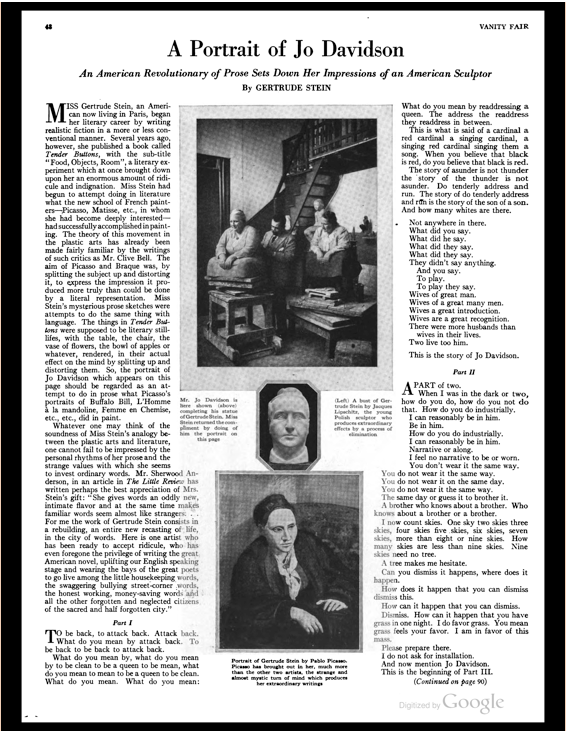
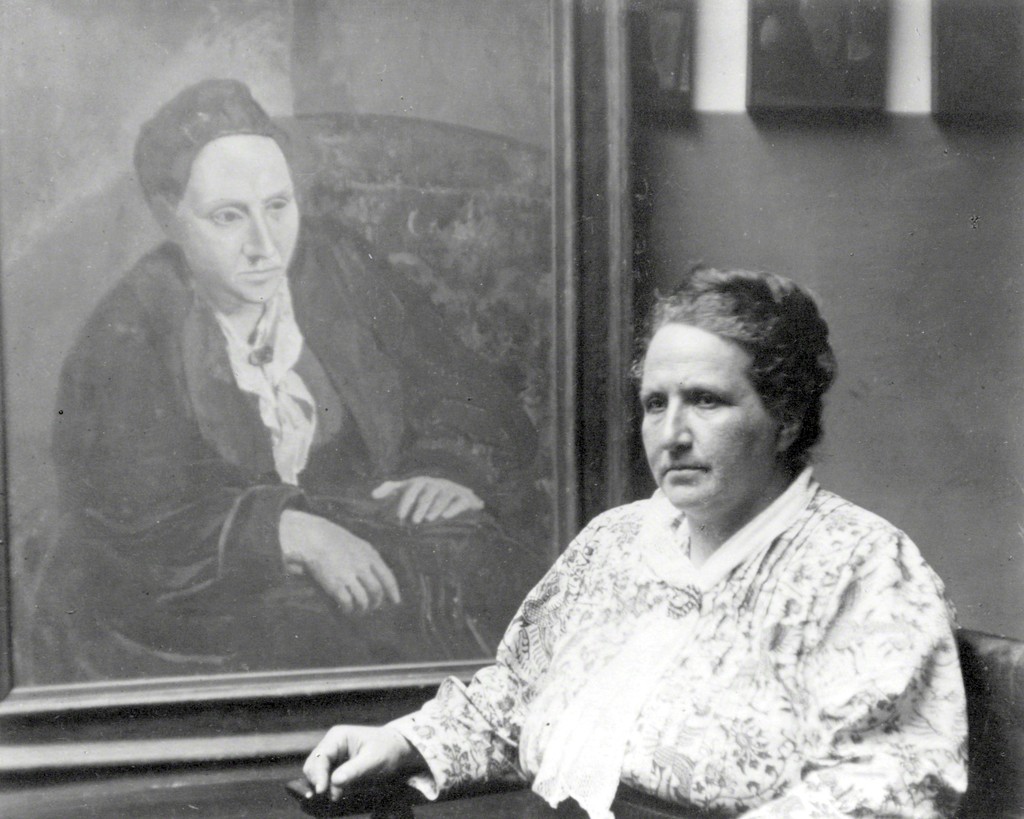
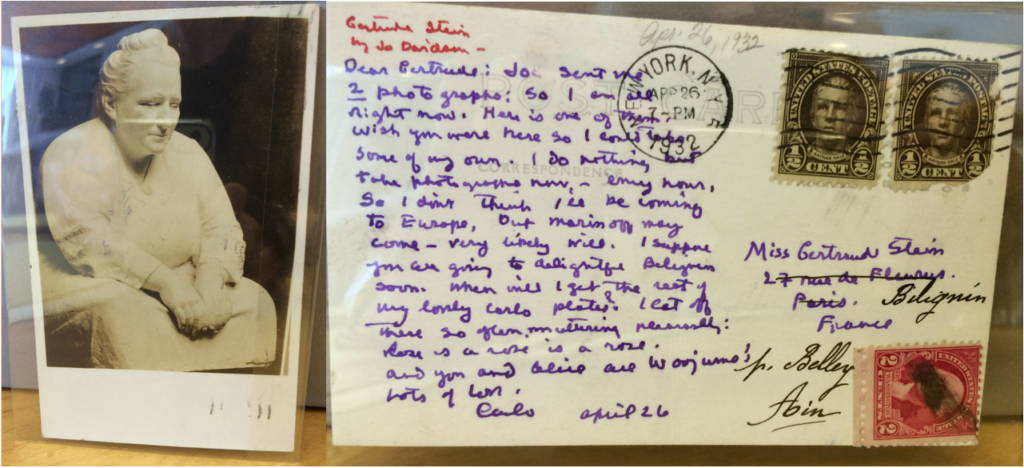
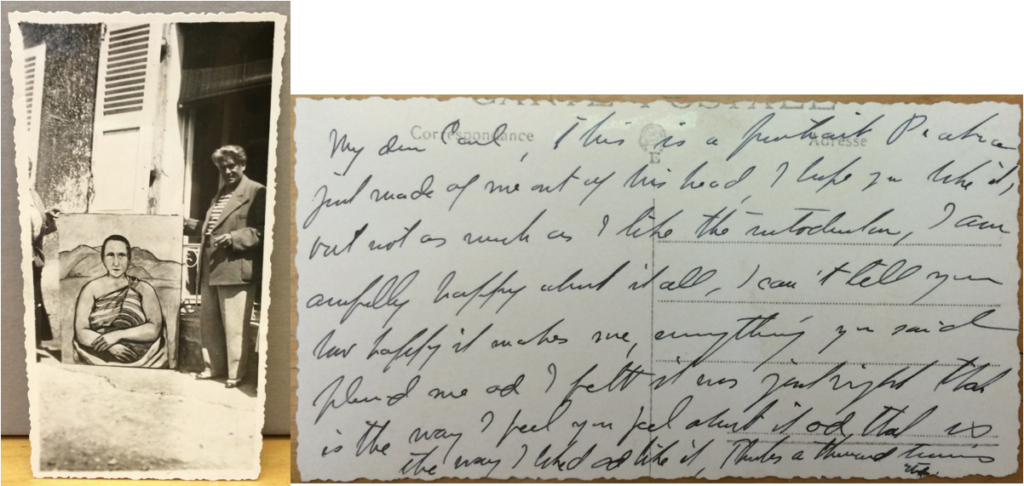
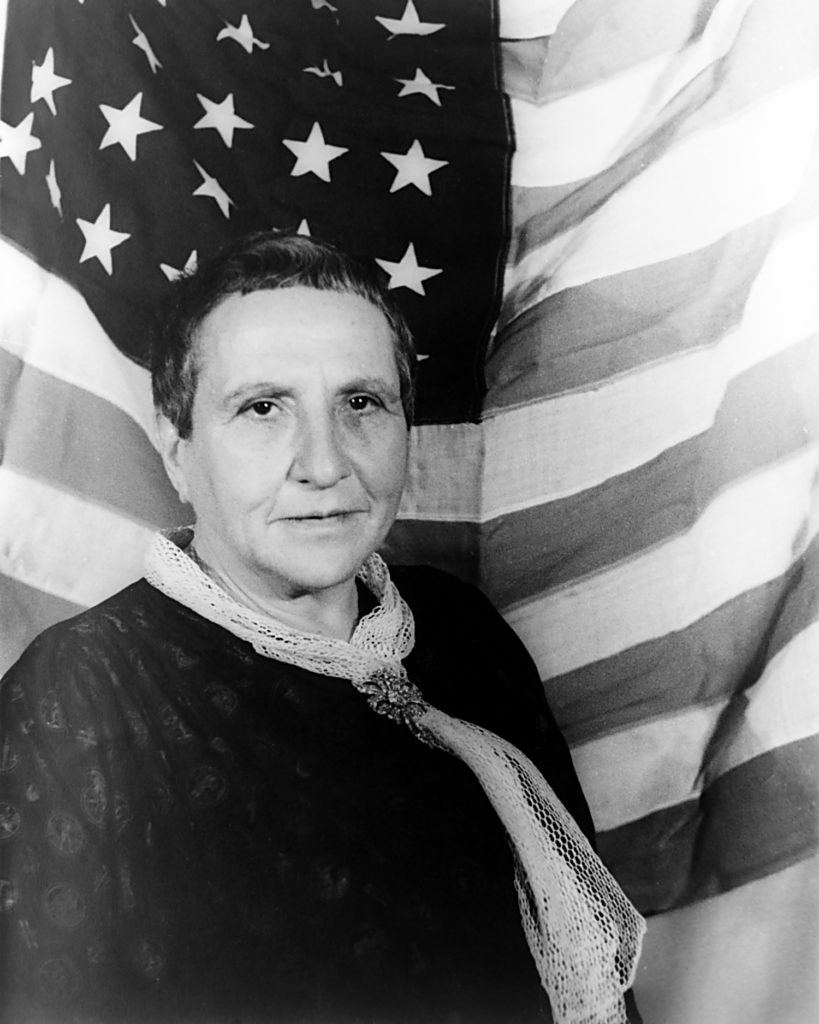
Comments
Post a Comment